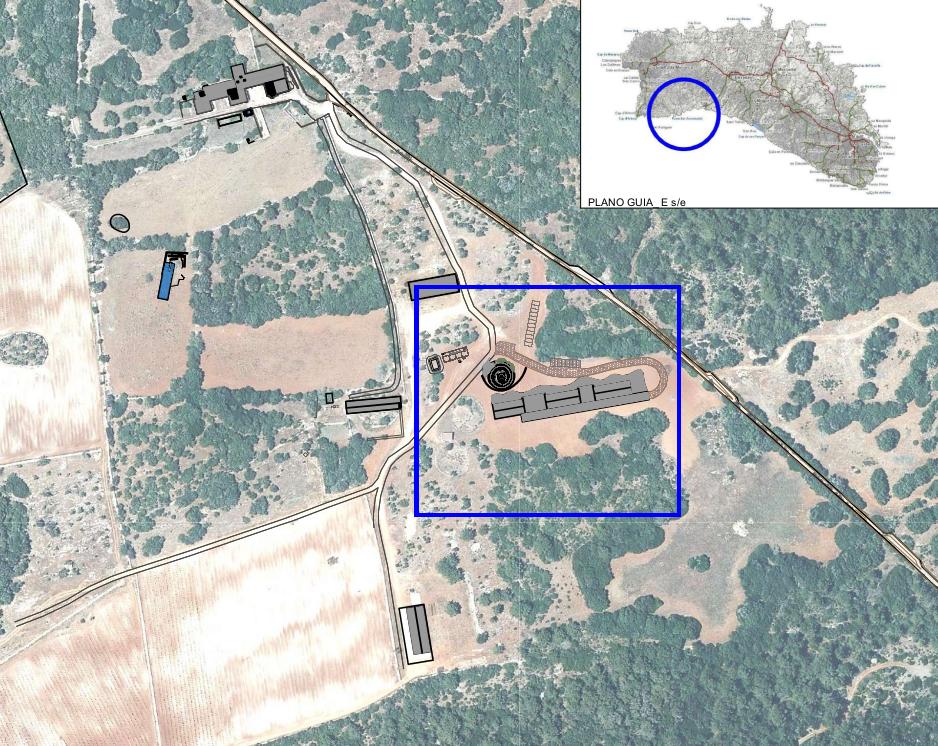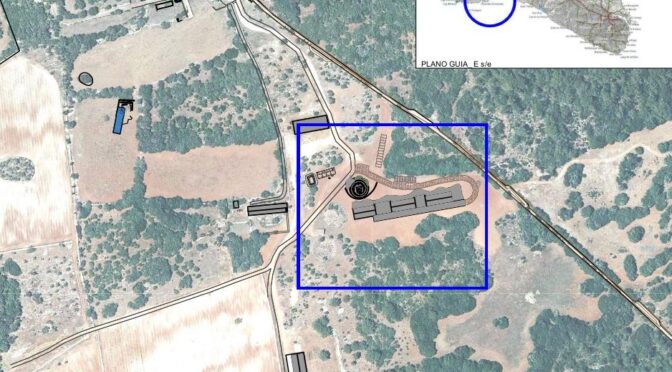Views: 1230
A new urban planning threat is being proposed on rural land in Menorca, presented as essential agricultural buildings to save the island’s countryside. Enormous building projects are being proposed with requests for exemption from urban planning parameters, so they can fall outside the scope of current regulations. These will be agricultural buildings… as long as the activity lasts.
Currently open to public consultation is a project for a large winery in Ciutadella, on the Camí de Macarella. It is planned on specially protected land and within an area of High Fire Risk. It is undergoing processing to be declared of General Interest. GOB has submitted objections.
Buildings without limits
The legislation regulating rural land states that agricultural buildings must have a maximum volume of 1,500 m³. The proposed winery in Ciutadella, according to the plans made available to the public, would have a volume of 14,420 m³. That is, a building whose volume represents 961% of what is allowed. For this reason, the developers are asking the Island Council to exempt them from the current urban planning parameters.
This property was among those that benefited from the Temporary Territorial Norms, which allowed all existing buildings to be used for tourism purposes. As a result, they no longer have facilities for agricultural activity. But this case goes even further, because after dedicating the houses, stables, barns, and sheds to tourism, they requested permission to build two more buildings for agricultural use, and these were granted. Nevertheless, some time later, they now argue they need a winery to process grapes. A massive winery.
This is the third attempt to build the large winery. The two previous projects were rejected due to the significant impacts they would have caused. The difference now is that there is a precedent, as at the end of last year a similar project was approved on a nearby estate, also in Ciutadella.
GOB believes that exemptions for agricultural uses should never exceed 50% of what is permitted. It is unacceptable to propose increases of nearly 1000% over what the legislation allows. A project of this scale seems more appropriate for an industrial zone than rural land. In fact, other wine-producing estates that require large facilities have chosen that option and carry out the industrial process in industrial estates.
Water concerns
The amount of water required by the project is also not guaranteed. The plans state they expect to have two aquifer water concessions, but these are not yet in place. Meanwhile, the intention is to supply the winery with tanker trucks and some rainwater storage tanks.
On this issue, GOB has requested in its objections that strict monitoring be enforced to prevent the five proposed tanks from ending up as swimming pools. There are at least two confirmed precedents in Menorca, according to sanctioning procedures, involving different developers but a common design company. This same company is listed among those involved in designing the current project.
The organisation has also warned that wastewater will not be directed to a treatment plant, and instead is planned to be managed with extraction trucks. In practice, this often ends up with uncontrolled spills into the surrounding land.
Natura 2000 site and fire risk
The area where the interventions are planned is part of the Natura 2000 network, specifically designated as a Special Protection Area for Birds (SPA). The law states that in SPAs, specific measures must be taken to avoid alterations and to ensure the conservation of habitats necessary for the survival and reproduction of the species.
It should also be noted that hundreds of metres of dry-stone walls and the associated mosaic vegetation have been removed from the estate in question.
It does not seem very logical to propose a construction of this scale within a High Fire Risk Area. It’s as if risk zoning classifications exist only on paper and not in practice. Building such a facility would also require extensive clearing of surrounding vegetation, further increasing the impact on the landscape beside the Camí de Macarella.
And what if the agricultural business fails?
It is worth asking what will happen to these huge buildings if, at some point, the proposed business fails. Will the new structures become agricultural warehouses or will they turn into apartments? What increase in property value will result from having these large constructions?
Locating massive buildings on rural land is a serious mistake. Either existing constructions should be used (this particular estate already has a large barn and two brand-new agricultural buildings), or the activities should be redirected to industrial areas.
The agricultural argument cannot be a loophole to endlessly exempt building projects from urban planning rules. We are now talking about a building that exceeds the legal limit by nearly 1000%. Where is the limit?
Public administrations must ensure rational land use and prevent the agricultural route from becoming a backdoor for developments that would otherwise be explicitly prohibited.


